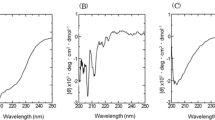Abstract
Surface- and matrix-bound signals modulate stem cell fate in vivo and in vitro. This protocol enables the immobilization of a wide range of biomolecules that contain primary amino groups to different types of solid carriers, including glass substrates and standard polystyrene well plates. We describe how thin polymer coatings of poly(octadecene-alt-maleic anhydride) can be used to covalently attach growth factors directly, or through poly(ethylene glycol) spacers, to solid supports at defined concentrations. Surface-immobilized growth factors can be presented over a wide range of concentrations (5–150 ng cm−2), as we have previously shown for leukemia inhibitory factor and stem cell factor. Cell activation can be achieved in the presence of adhesion-promoting extracellular matrix proteins. Depending on the methods used, the overall procedure takes 1.5–3 d. In general, the approach can be used to investigate the effect of defined amounts of immobilized growth factors on stem cells and on the maintenance, growth and differentiation of other cell types.






Similar content being viewed by others
References
DeLong, S.A., Moon, J.J. & West, J.L. Covalently immobilized gradients of bFGF on hydrogel scaffolds for directed cell migration. Biomaterials 26, 3227–3234 (2005).
Fan, V.H. et al. Tethered epidermal growth factor provides a survival advantage to mesenchymal stem cells. Stem Cells 25, 1241–1251 (2007).
Gomez, N., Lu, Y., Chen, S. & Schmidt, C.E. Immobilized nerve growth factor and microtopography have distinct effects on polarization versus axon elongation in hippocampal cells in culture. Biomaterials 28, 271–284 (2007).
Driessen, R.L., Johnston, H.M. & Nilsson, S.K. Membrane-bound stem cell factor is a key regulator in the initial lodgment of stem cells within the endosteal marrow region. Exp. Hematol. 31, 1284–1291 (2003).
Kinashi, T. & Springer, T.A. Steel factor and c-kit regulate cell-matrix adhesion. Blood 83, 1033–1038 (1994).
Discher, D.E., Mooney, D.J. & Zandstra, P.W. Growth factors, matrices and forces combine and control stem cells. Science 324, 1673–1677 (2009).
Pompe, T. et al. Maleic anhydride copolymers—a versatile platform for molecular biosurface engineering. Biomacromolecules 4, 1072–1079 (2003).
Maitz, M.F., Teichmann, J., Sperling, C. & Werner, C. Surface endotoxin contamination and hemocompatibiliy evaluation of materials more. J. Biomed. Mater. Res. B 90B, 18–25 (2009).
Pompe, T., Renner, L., Grimmer, M., Herold, N. & Werner, C. Functional films of maleic anhydride copolymers under physiological conditions. Macromol. Biosci. 5, 890–895 (2005).
Alberti, K. et al. Functional immobilization of signaling proteins enables control of stem cell fate. Nat. Methods 5, 645–650 (2008).
Franke, K., Pompe, T., Bornhäuser, M. & Werner, C. Engineered matrix coatings to modulate the adhesion of CD133+ human hematopoietic progenitor cells. Biomaterials 28, 836–843 (2007).
Herklotz, M., Werner, C. & Pompe, T. The impact of primary and secondary ligand coupling on extracellular matrix characteristics and formation of endothelial capillaries. Biomaterials 30, 35–44 (2009).
Pompe, T., Keller, K., Mitdank, C. & Werner, C. Fibronectin fibril pattern displays the force balance of cell-matrix adhesion. Eur. Biophys. J. 34, 1049–1056 (2005).
Pompe, T., Renner, L. & Werner, C. Nanoscale features of fibronectin fibrillogenesis depend on protein-substrate interaction and cytoskeleton structure. Biophys. J. 88, 527–534 (2005).
Sperling, C., Salchert, K., Streller, U. & Werner, C. Covalently immobilized thrombomodulin inhibits coagulation and complement activation of artificial surfaces in vitro. Biomaterials 25, 5101–5113 (2004).
Salchert, K. et al. Immobilization of an anticoagulant benzamidine derivative: effect of spacer arms and carrier hydrophobicity on thrombin binding. Acta Biomater. 1, 441–449 (2005).
Osaki, T. & Werner, C. Ionization characteristics and structural transitions of alternating maleic acid copolymer films. Langmuir 19, 5787–5793 (2003).
Renner, L., Pompe, T., Salchert, K. & Werner, C. Dynamic alterations of fibronectin layers on copolymer substrates with graded physicochemical characteristics. Langmuir 20, 2928–2933 (2004).
Renner, L., Pompe, T., Salchert, K. & Werner, C. Fibronectin displacement at polymer surfaces. Langmuir 21, 4571–4577 (2005).
Pompe, T., Markowski, M. & Werner, C. Modulated fibronectin anchorage at polymer substrates controls angiogenesis. Tissue Eng. 10, 841–848 (2004).
Acknowledgements
We thank T. Lenk for technical assistance. The financial support of the Federal Ministry of Science and Education of Germany and the German Research Foundation is gratefully acknowledged.
Author information
Authors and Affiliations
Contributions
T.P. and K.S. designed and conducted the experiments, analyzed the data and wrote the paper; K.A. designed and conducted the experiments and analyzed the data; P.Z. and C.W. designed the experiments and wrote the paper.
Corresponding author
Ethics declarations
Competing interests
The authors declare no competing financial interests.
Rights and permissions
About this article
Cite this article
Pompe, T., Salchert, K., Alberti, K. et al. Immobilization of growth factors on solid supports for the modulation of stem cell fate. Nat Protoc 5, 1042–1050 (2010). https://doi.org/10.1038/nprot.2010.70
Published:
Issue Date:
DOI: https://doi.org/10.1038/nprot.2010.70
- Springer Nature Limited
This article is cited by
-
Prolonged survival of transplanted stem cells after ischaemic injury via the slow release of pro-survival peptides from a collagen matrix
Nature Biomedical Engineering (2018)
-
Matrix Metalloproteinase Responsive Delivery of Myostatin Inhibitors
Pharmaceutical Research (2017)
-
Investigation of the changes of biophysical/mechanical characteristics of differentiating preosteoblasts in vitro
Biomaterials Research (2015)
-
3D niche microarrays for systems-level analyses of cell fate
Nature Communications (2014)
-
Sustained Growth Factor Delivery in Tissue Engineering Applications
Annals of Biomedical Engineering (2014)





